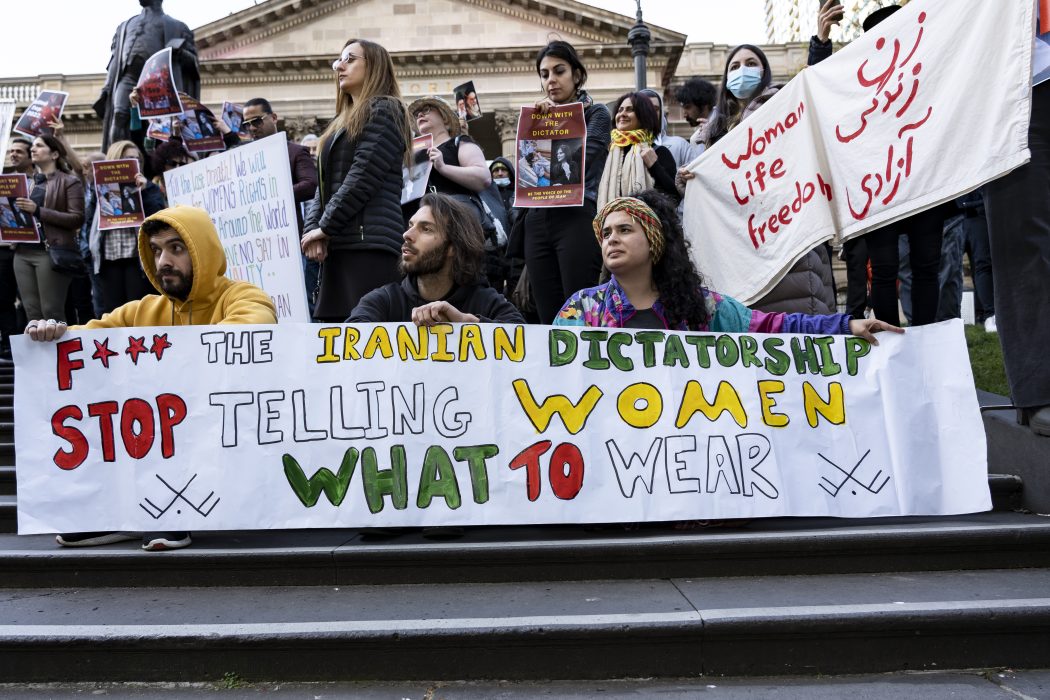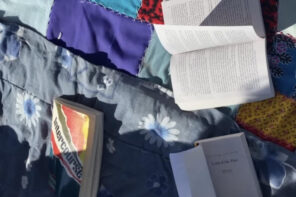On September 13th, 22-year-old Mahsa Amini was detained by Iranian police forces for wearing her hijab incorrectly. Three days later, Amini died tragically in police custody. While her cause of death was reported by police as “heart attack,” many people are certain she died a violent death at the hands of police officers. The following Monday, Iranians banded together and began protesting in favor of a formal investigation into Amini’s death. They also call for the dismantling of Iran’s “morality police,” an ironic name for a government-backed organization responsible for the tragic deaths of many innocent Iranian citizens. While the numbers reported are inconsistent, it is safe to say that hundreds of protesters have been arrested with the death toll reaching 92. On the first weekend of October, the US, Canada, France, Turkey, and many other countries took a stand with the brave women of Iran and held protests all around the world to show their support.
Although most social media services are already banned in Iran, the Iranian government took extra measures to suppress free speech by shutting down Instagram and WhatsApp, platforms commonly used by activists to disseminate information and organize protests. Restriction of free speech and limitation of internet services prevent the movement from gaining momentum or emboldening new citizens to protest. While monitoring or restricting the use of social media certainly excludes some citizens from participating in the protest, it gives informed Iranians another reason to not trust or believe in their own government. Steps taken to dampen social unrest will only give citizens more incentive to fight back.
Steps taken to dampen social unrest will only give citizens more incentive to fight back.
Mahsa Amini was detained for wearing her hijab improperly — some of her hair visible in the front. In response to the violation exhibited by the so-called “mortality police,” powerful images of women all over the world cutting their hair are circulating social media. Iranian women are cutting off their ponytails with tears in their eyes amidst the chaos at the protests, participating in a bold act of political defiance. This powerful act establishes authority, and rids the government of the notion that they possess any power over the lives of Iranian women. These images carry weight, frustration, and pain. These images demand to be seen.
As emotions run high in the Iranian community this week, I asked my roommate Tara Mehr (age 20), an Iranian McGill student from Vancouver, to speak about the recent events. She is especially passionate about the misrepresentation of the cause of protests. Recently, most of the conversation in the media is about how the hijab itself oppresses women in Iran, when in reality that is not the case. The issue is about choice, personal freedoms, and women having autonomy over their own lives and bodies. It is not about the specific articles of clothing or religious symbols that they wear, but rather the choice to wear it or not. Tara expresses how it is easy for people to villainize Muslims and push the issue on the religion itself. Unfortunately, we have seen Muslims being targeted in Canada and across the world countless times. Although familiar, it does not make it any less painful when anyone, from world leaders to ordinary citizens, display blanatant disregard for Muslim lives. It is a beautiful religion, but the corrupt Iranian government is weaponizing religion to take away people’s rights. The problem is not with the hijab itself, but rather the weaponization of the hijab and the religion by the government to strip women of their freedoms.
It is not about the specific articles of clothing or religious symbols that they wear, but rather the choice to wear it or not.
Resistance against Quebec’s Laicity Act, more widely known as Bill 21, addresses a similar issue—a government stripping people of their choice regarding something so personal.
Before 1979, Iran was a very different country. Women enjoyed more freedom and the government had no religious ties. In 1979, the Islamic Revolution occurred, and government mandates regarding widespread use of the hijab for women began. Tensions rose, as many Iranians did not practice Islam and felt uncomfortable being forced to wear a religious symbol to which they had no ties. Tara’s grandparents lived in Tehran before the Revolution and say that the Iran they see on TV now is not the Iran they remember. They speak of how beautiful a place it once was and how unfortunate it is that their country has been terrorized by this abusive regime. With the recent uprising, Tara notes how it is hard to understand the big picture, that this is an issue greater than the hijab. Confronting the bigger picture of a highly corrupt and abusive government means confronting 43 years of violence, killing, and unjust uses of force.
It is important for all of us to recognize the immense fear that these Iranian girls and women feel while removing their hijabs and cutting their hair.
It is important for all of us to recognize the immense fear that these Iranian girls and women feel while removing their hijabs and cutting their hair. It is the ultimate act of bravery. Even more so, it is important that we keep speaking about this, keep protesting, and keep informing each other –– the fight is not even close to over.
Women are not free until all women are free.








